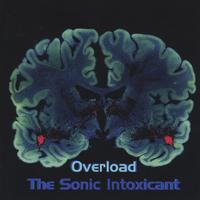Cheap Sound Experiments
 The guys at NeuroPop use
neurosensory algorithms to get in to the heads of their listeners. I
heard about their work on NPR’s Here and Now show, and I was immediately
intrigued. I work in an open environment, and large portions of my
job involve serious concentration if I ever hope to get anything done.
My noise abatement activities range from simply putting on my headphones
without any music, to the
Solid Steel Podcast, to brown noise and rain tracks.
The guys at NeuroPop use
neurosensory algorithms to get in to the heads of their listeners. I
heard about their work on NPR’s Here and Now show, and I was immediately
intrigued. I work in an open environment, and large portions of my
job involve serious concentration if I ever hope to get anything done.
My noise abatement activities range from simply putting on my headphones
without any music, to the
Solid Steel Podcast, to brown noise and rain tracks.
If the NeuroPop guys think they’ve hit upon a combination of sounds that will encourage the listener to focus, and they are willing to sell the track for only $0.99, I’m definitely up for some experimentation.
The verdict? It’s neat. It definitely does something, but I think I am still focusing on the track rather than focusing on the work that needs to be done. It’ll stay in my rotation, but I’m just as likely to get into the code zone with a podcast from DK as I am when listening to NeuroPop’s focus track.
And for the record, the NeuroPop tracks definitely benefit from good headphones. I use Sennheiser HD 265s at work, and the track sounds incredible. At home I’m using the Sennheiser RS 170s, and the track just sounds good.
But that’s not what I really wanted to talk about today. I was a little shocked at the reaction I got from coworkers when discussing these NeuroPop tracks. I was asked why I bother with such experiments when I could just not bother. I got the same reaction when I built a standing desk at home, and when I went from two monitors to four. I’d rather run an experiment that fails than always wonder if there was something to a crazy idea that I heard on the radio. And remember, we aren’t talking about a lot of money. I spent more driving home from the office today than I did on this music track.
Failure to experiment sounds terribly dull when compared to the possibilities locked away in experiments that could fail.